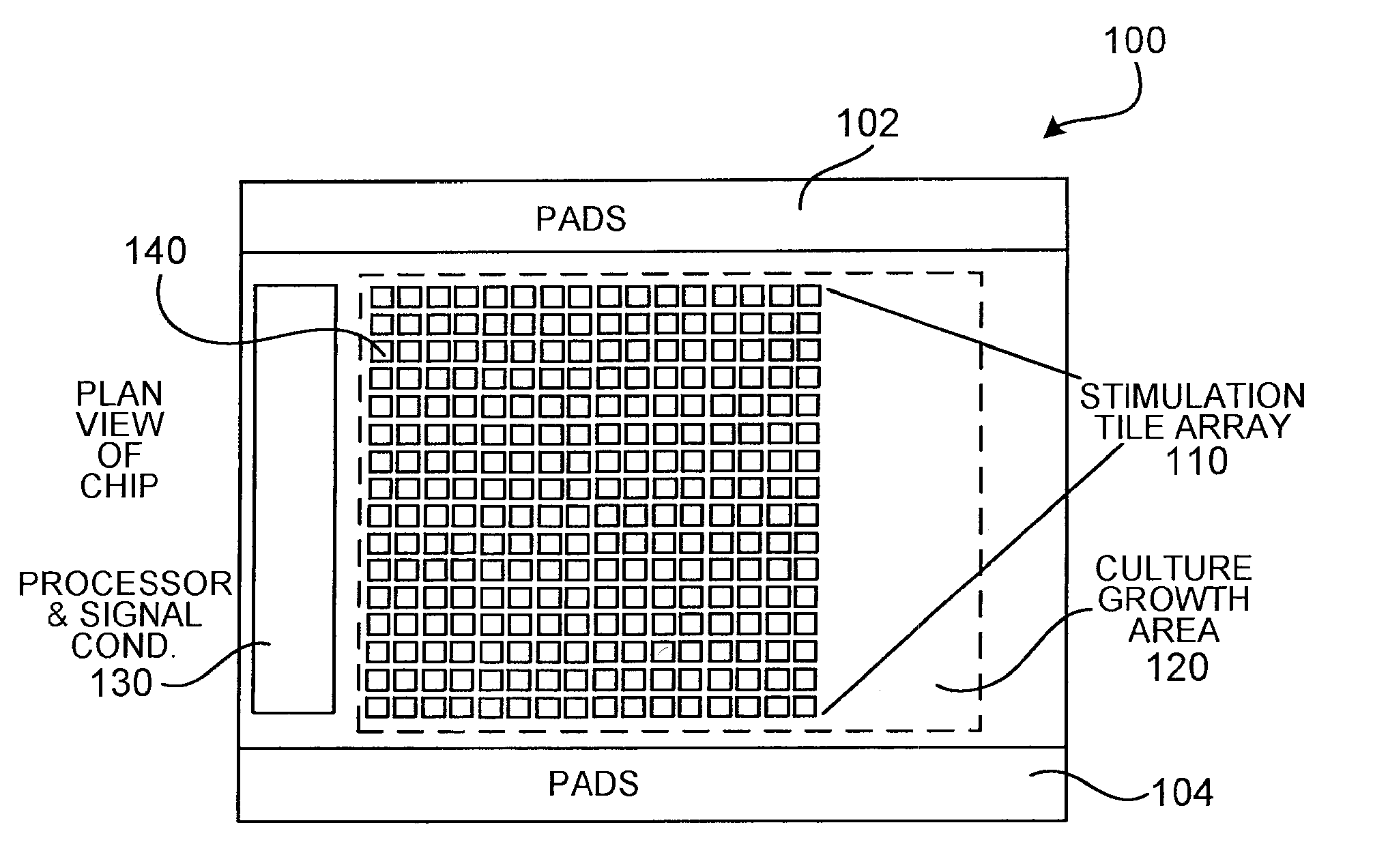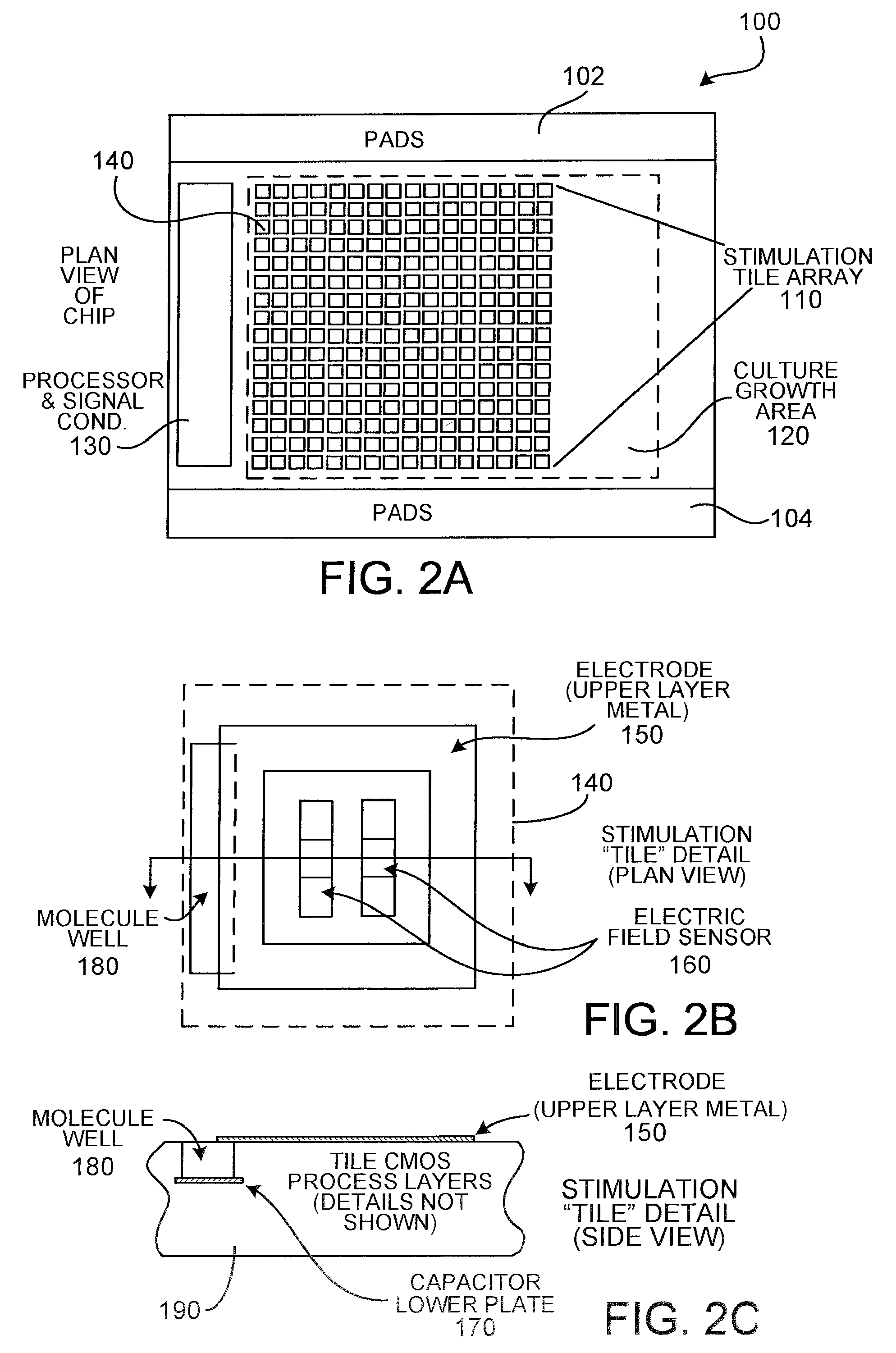Method and apparatus for guiding growth of neurons
a technology of guiding growth and neurons, applied in the field of guiding growth of neurons, can solve the problems and achieving the effect of reducing the number of neurons in the network
- Summary
- Abstract
- Description
- Claims
- Application Information
AI Technical Summary
Benefits of technology
Problems solved by technology
Method used
Image
Examples
example 1
Electrode Array and Microcontroller
[0073] The following describes an electrode array which, although it does not provide an array of capacitors, embodies various design principles that are consistent with the apparatus of the present invention. The design of an electrode structure (lexel array) for a bio-analysis system is a checkerboard pattern of discrete planar metal microelectrodes. The lexel array has been fabricated using the services of CMC Microsystems (formerly the Canadian Microelectronics Corporation) using the TSMC 0.18 μm mixed signal CMOS process with 3.3 V devices. The checkerboard pattern allows for the maximum electrode density per unit area for the chosen circuit topology and the available fabrication process. The distance across the lexels and the spacing between the lexels is 10 μm.
[0074] The designed array contains 741 lexels, constrained only by the available silicon area. In order to keep the number of control signals manageable while still having the abilit...
example 2
Capacitative Stimulation of a Synapse
[0078]FIG. 4 shows a silicon chip interfaced with a synapse (not to scale; scale bar 20 μm.): (a) Hybrid device with capacitor (C), chemical synapse, and transistor (gate G, source S, drain D); (b) Micrograph with presynaptic VD4 neuron (left) and postsynaptic LPeD1 neuron (right) from Lymnaea stagnalis on a linear array of capacitors and transistors. The implementation of a neuronal memory on a semiconductor required a microelectronic interfacing of two neurons that formed a chemical synapse as illustrated in FIG. 4(a). It is known that in vivo the neuron VD4 from L. stagnalis forms a cholinergic synapse with the neuron LPeD1. That synapse can be reconstituted in vitro in a soma-soma configuration. By using soma-soma contacts, problems with a displacement of neurons from their contact sites as caused by neuronal outgrowth were avoided. VD4 (visceral dorsal 4) and LPeD1 (left pedal dorsal 1) neurons were paired on a linear array of upon the syna...
PUM
| Property | Measurement | Unit |
|---|---|---|
| size | aaaaa | aaaaa |
| aspect ratio | aaaaa | aaaaa |
| area | aaaaa | aaaaa |
Abstract
Description
Claims
Application Information
 Login to View More
Login to View More - R&D
- Intellectual Property
- Life Sciences
- Materials
- Tech Scout
- Unparalleled Data Quality
- Higher Quality Content
- 60% Fewer Hallucinations
Browse by: Latest US Patents, China's latest patents, Technical Efficacy Thesaurus, Application Domain, Technology Topic, Popular Technical Reports.
© 2025 PatSnap. All rights reserved.Legal|Privacy policy|Modern Slavery Act Transparency Statement|Sitemap|About US| Contact US: help@patsnap.com



